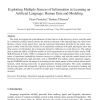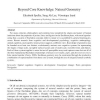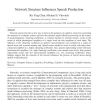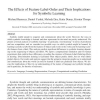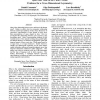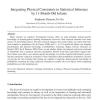COGSCI
2010
14 years 10 months ago
2010
106
Voted
COGSCI
2010
14 years 10 months ago
2010
For many centuries, philosophers and scientists have pondered the origins and nature of human intuitions about the properties of points, lines, and figures on the Euclidean plane,...
90
Voted
COGSCI
2010
14 years 10 months ago
2010
Network science provides a new way to look at old questions in cognitive science by examining the structure of a complex system, and how that structure might influence processing....
118
Voted
COGSCI
2010
14 years 11 months ago
2010
Natural language is full of patterns that appear to fit with general linguistic rules but are ungrammatical. There has been much debate over how children acquire these ‘‘ling...
108
Voted
COGSCI
2010
14 years 11 months ago
2010
It is frequently claimed that the human mind is organized in a modular fashion, a hypothesis linked historically, though not inevitably, to the claim that many aspects of the huma...
COGSCI
2010
15 years 17 days ago
2010
Learning depends on attention. The processes that cue attention in the moment dynamically integrate learned regularities and immediate contextual cues. This paper reviews the exte...
114
click to vote
COGSCI
2010
15 years 17 days ago
2010
Symbols enable people to organize and communicate about the world. However, the ways in which symbolic knowledge is learned and then represented in the mind are poorly understood....
101
Voted
COGSCI
2010
15 years 17 days ago
2010
What is the relationship between space and time in the human mind? Studies in adults show an asymmetric relationship between mental representations of these basic dimensions of ex...
COGSCI
2010
15 years 17 days ago
2010
